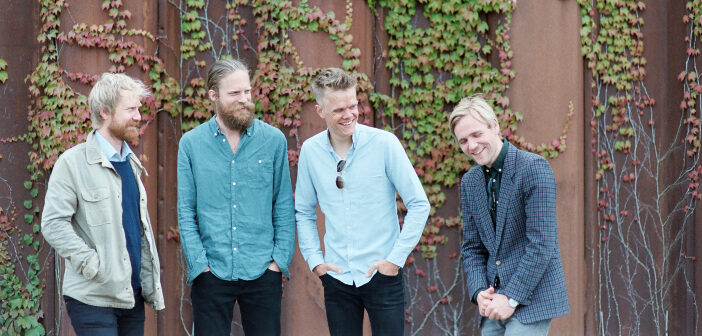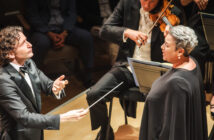After an astounding 47 years the Emerson String Quartet gave its farewell tour earlier this year, and its very last concert in New York just a few weeks ago. Who will carry on the standard set by the Emerson? Among the names mentioned recently was the Danish String Quartet.
The group recently celebrated its twentieth anniversary and appeared last week in Toronto at Koerner Hall. It was a typical program for the DSQ, starting with Purcell’s Chaconne from 1680 and working up through the centuries in quartets by Haydn, Schubert and Shostakovich.
The DSQ is comprised of three Danes and a Norwegian (Fredrik, the cellist). The group plays with amazing virtuosity, taking an interest in a vast repertoire which includes lots of contemporary music and traditional Scandinavian music, all done with personality and humour. At Koerner Hall, the the group’s concert members introduced the music with informative and witty remarks. I particularly enjoyed this comment from their website: “Being relatively bearded, we are often compared to the Vikings. However, we are only pillaging the English coastline occasionally.”
The Purcell made a rather austere and low-key opening for Toronto’s DSQ concert but it only served to make Haydn’s Op, 20 No. 3 all the more vivid and delightful. Haydn is always full of surprises, but never more so than in this quartet from 1772. It stops and starts when least expected and new material always seems to be popping in from left field. The DSQ gave it a terrific performance and reminded us that Haydn quartets are not played nearly often enough by visiting quartets.
Curiously, the following String Quartet No. 7 by Shostakovich sounded positively Haydnesque after the Op. 20 No. 3. It, too, stops and starts when one least expects it, having all sorts of fun manipulating thematic material. With a 12-minute runtime, this is the shortest of the Shostakovich quartets, and it shows that the Russian composer could be economical if he wanted as much. There is not much soul-searching here, but it is a consistently engrossing piece. The DSQ violinists changed places during the performance, an act seldom done by ensembles aside from the Emerson String Quartet. It serves to give the often overshadowed second violinist a chance to shine, and shine he did in this performance.
I most recently encountered Schubert’s “Death and the Maiden,” just a few weeks ago. Excerpts were used in Stephen Brown’s play Dr. Semmelweis in London’s Harold Pinter Theatre, in which members of the Salomé Quartet play from memory and in costume, accompanied by ballet dancers and actors. Together, they tell the story of the Hungarian doctor Ignaz Semmelweis who tried to save lives by instituting hygienic reforms in 1847, which were largely ignored despite amounting to no more than physicians and surgeons needing to wash their hands before and after any invasive medical procedure. This ignorance led to the loss of millions of lives, especially those of women. Schubert’s music helps immeasurably to express the tragic message of the play, especially in the first movement of his D minor quartet. Schubert’s quartet does not really have a ‘program’ as such, but his song “Death and the Maiden” forms the basis of the slow movement. In their Koerner Hall performance of “Death of the Maiden,” DSQ employed a wide range of dynamics, beginning the slow movement at a volume level that was barely audible. This was a deeply felt reading that commanded attention from beginning to end.
The DSQ made its first appearance at the Royal Conservatory in 2018, and it has been back several time since. To judge by the rapturous applause that greeted the end of the Schubert at Koerner Hall, I suspect the DSQ will be returning again soon.
About the Danish String Quartet
The DSQ have recorded extensively, mostly for the ECM label. Back in Denmark it operates its own summer music camp and its own chamber music festival. Later this month in Copenhagen the DSQ Festival will feature quartets by Thomas Adés.















